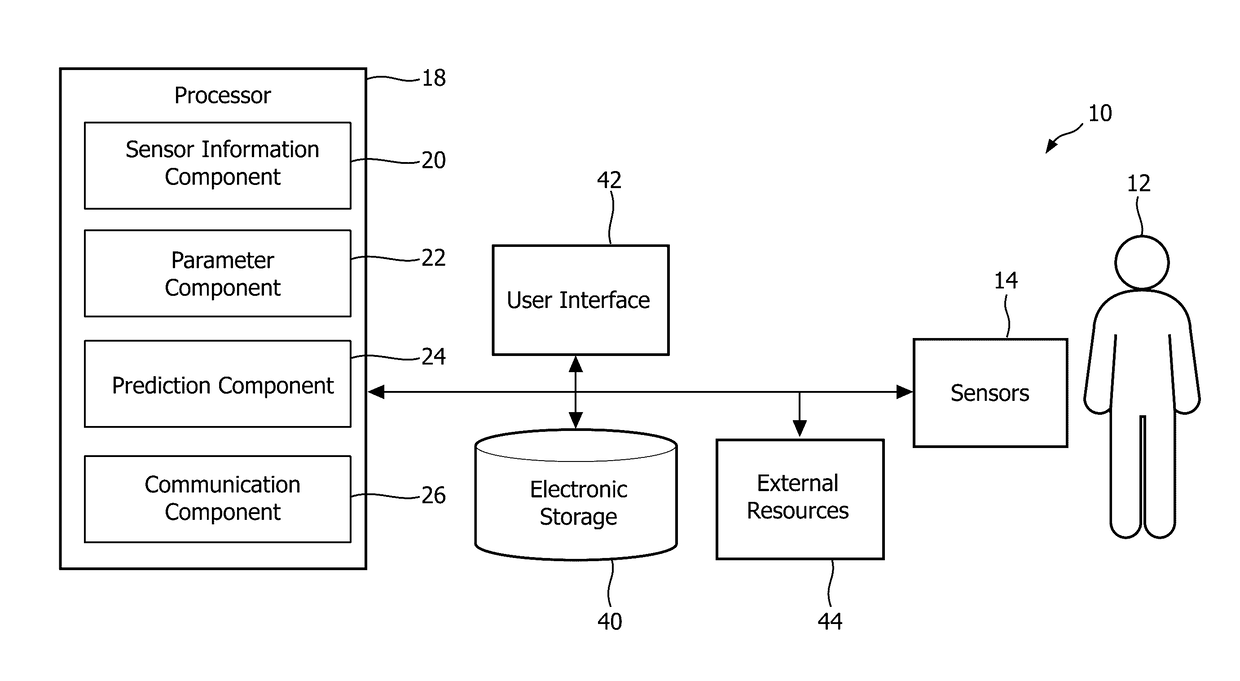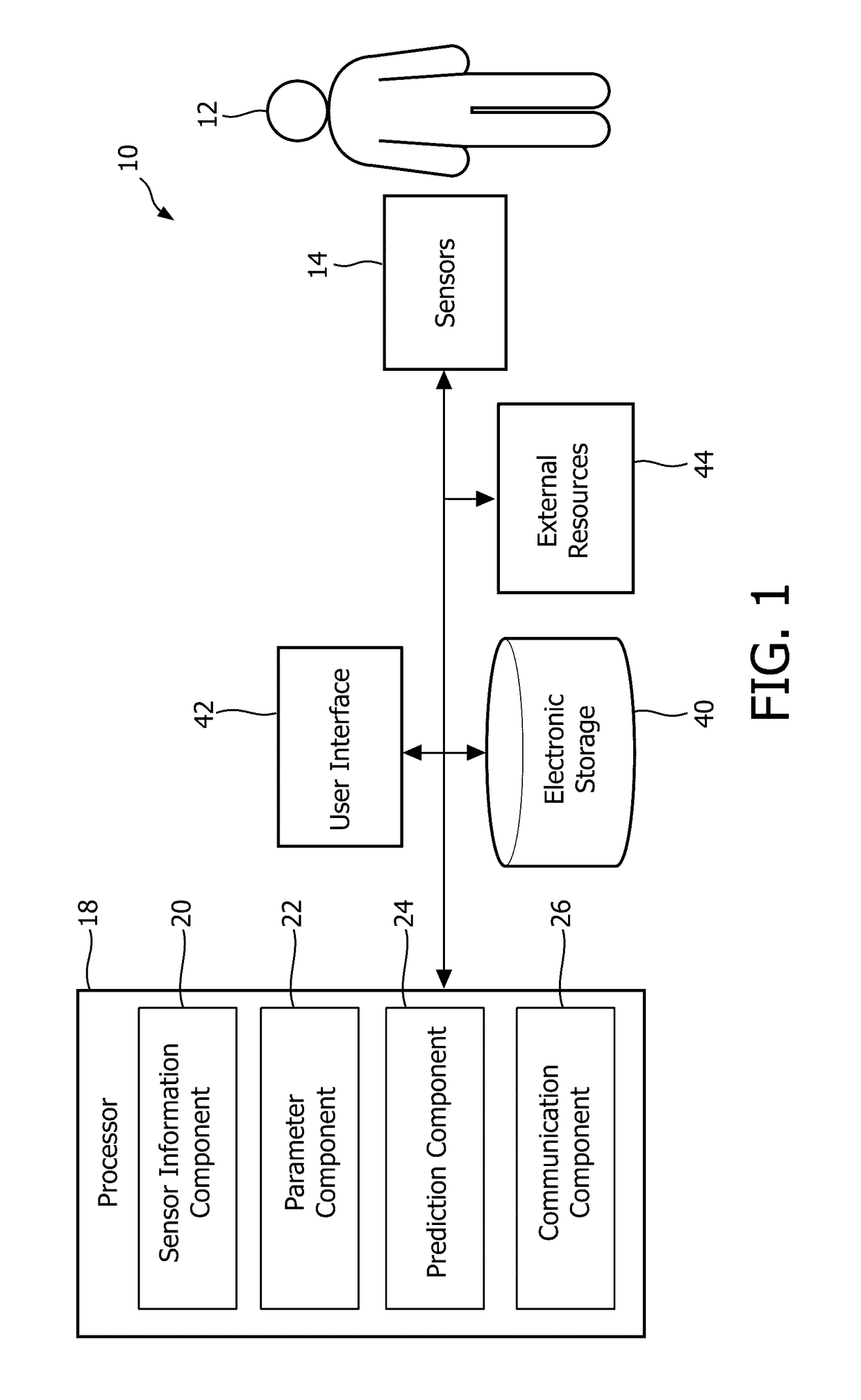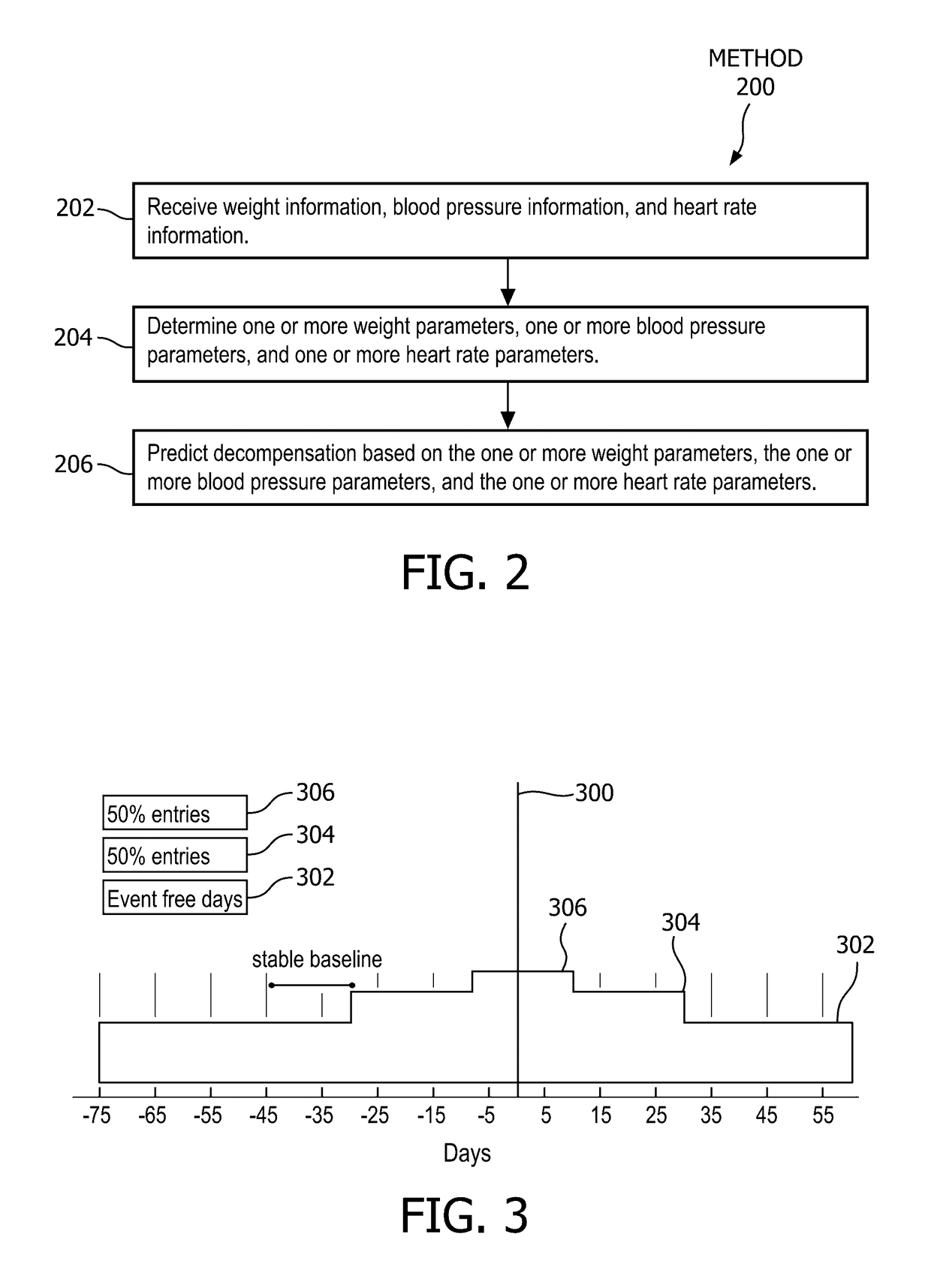System and method for predicting heart failure decompensation
a heart failure and decompensation technology, applied in the field of system and method for predicting heart failure decompensation, can solve the problems of poor sensitivity and failure to be used successfully to predict decomposition
- Summary
- Abstract
- Description
- Claims
- Application Information
AI Technical Summary
Benefits of technology
Problems solved by technology
Method used
Image
Examples
example experimental
Methods and Data
[0053]The data used for this study was retroactively collected from the Trans-European Network-Home-Care Management System (TEN-HMS) and from a telemonitoring service in Hull, UK (Motiva-Hull) in which patients with a recent admission for worsening HF could be enrolled. Amongst other criteria, the TEN-HMS study excluded subjects with a left ventricular ejection fraction (LVEF) greater than 40%. With the intention of homogenizing the two databases those patients in the Motiva-Hull database who (upon enrolment) presented with a LVEF greater than 40% and those without records for both LVEF and N-terminal pro-brain natriuretic peptide (NT-proBNP) from the time of enrolment were excluded. Subjects were required to use a telemonitoring device installed in their homes for recording their weight, BP and HR every day, at a fixed time. An individual instance of measurement led to a single value for weight, systolic BP, diastolic BP and HR. For the purpose ...
PUM
 Login to View More
Login to View More Abstract
Description
Claims
Application Information
 Login to View More
Login to View More - R&D
- Intellectual Property
- Life Sciences
- Materials
- Tech Scout
- Unparalleled Data Quality
- Higher Quality Content
- 60% Fewer Hallucinations
Browse by: Latest US Patents, China's latest patents, Technical Efficacy Thesaurus, Application Domain, Technology Topic, Popular Technical Reports.
© 2025 PatSnap. All rights reserved.Legal|Privacy policy|Modern Slavery Act Transparency Statement|Sitemap|About US| Contact US: help@patsnap.com



